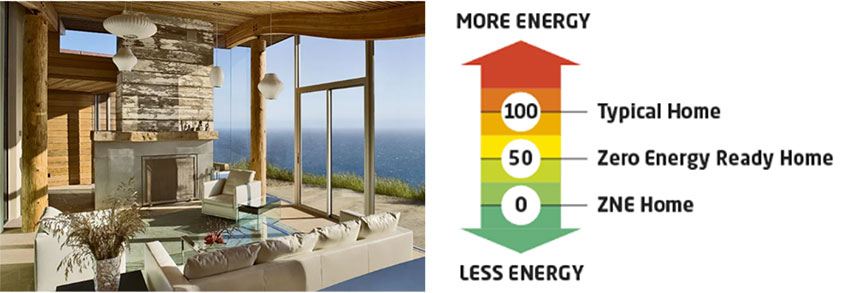This CE Center article is no longer eligible for receiving credits.
Carbon dioxide is a natural gas that is present in the atmosphere. It has been extensively documented, though, that there is currently too much of it present in the air due to the extensive, sustained burning of carbon-rich fossil fuels over the past 150 years or so. Buildings are a significant contributor to this problem in two ways. First, is the amount of carbon that is burned in the process of acquiring, manufacturing, and transporting key building materials such as concrete, steel, and aluminum. This “embodied carbon” has been shown to be quite significant in terms of environmental impact. The second contributor is the need for buildings to consume energy for their operations─heating, cooling, lighting, ventilation, etc. When such consumed energy comes from fossil fuel sources, either on site or at an electricity-generating power plant, the building becomes a direct contributor to the overall problem through normal building operations. In this course, we look at some ways that both problems can be addressed. Architects and other design professionals have been addressing operational energy and carbon for several decades. The time is also past due for addressing the embodied carbon in our buildings as well.
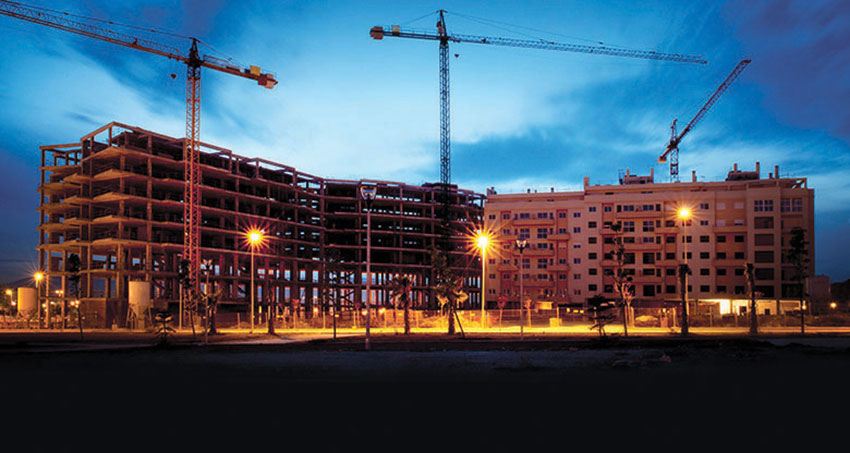
Photo courtesy of PERC
Addressing embodied carbon in construction materials as well as the operational carbon from energy consumption are both needed to achieve full carbon neutral results.
EMBODIED CARBON
The issue of addressing embodied carbon in buildings has received a fair bit of attention in recent years. One of the leading sources for accurate information on this topic is the not-for-profit organization known as Architecture 2030 founded by AIA Gold Medalist Ed Mazria, FAIA. The organization points out, “Embodied carbon represents the carbon emissions associated with making building products and construction, from raw material extraction to manufacturing, transportation, and end of life disposal or recycling.” How significant is the role of embodied carbon? Architecture 2030 reports, “Annually, embodied carbon is responsible for 11% of global GHG emissions and 28% of global building sector emissions. It is anticipated that embodied carbon will be responsible for 72% of the carbon emissions associated with global new construction between now and 2030.” Recognizing this significance, examples of ways to address embodied carbon in buildings are discussed in the following sections.

Images courtesy of Sloan
The use of third-party verification programs, such as those represented here, can help designers explore and understand which products have lower embodied carbon compared to others.
BUILDING PRODUCTS AND MATERIALS
Architects and designers routinely select and specify the materials and products that are used in building projects. Therefore, we also have an incredible opportunity to reduce the amount of embodied carbon in buildings through well-informed material selection, sustainability-focused specification writing, and, of course, through design. The result can be significant since embodied emissions are locked in once the building is constructed and cannot be taken back or reduced at that point. It is not uncommon for that embodied carbon to be the equivalent of over 20 years’ worth of the carbon produced by building operations – concentrated in the few years of manufacture and construction.
Architecture 2030 points out that the use of just three materials–concrete, steel, and aluminum–are responsible for 23% of total global emissions. Note that it is not 23% of all building materials, it is a staggering 23% of all of the emissions from all sources on the planet. Beginning with designs and specifications that reduce or minimize the use of these three materials is a good start in all cases. While there are alternative materials that can be considered for some things (see https://materialspalette.org/ ), some amount of aluminum and steel will certainly be needed and used in most buildings.
Based on the above, the first step in specifying more carbon-neutral products is to understand how manufacturers measure and then reduce or offset their carbon footprint with sustainable manufacturing processes. Many tools are now available to assist in this process, including requirements for meeting green building certification standards such as LEED which is anticipating updates to address the ongoing push for decarbonization through electrification, fossil fuel elimination, and on-site and offsite renewables─all leading to carbon neutrality in buildings. LEED and other rating systems (i.e., Green Guard, BREAM, WELL, etc.) rely on the use of Environmental Product Declarations (EPDs) or the human-centered Health Product Declarations (HPDs). All of these tools are based on third-party verified data related to the makeup and quantity of the different components or ingredients of a building material or product. By using this information, different products can be reviewed and compared to make an informed decision on which ones are closer to carbon neutral, and environmentally preferable overall, than others.
Carbon Offset by Manufacturers
As architects and designers become more aware of the breadth of sustainable commercial products, the construction industry is meeting the demand for further growth. This is particularly true among manufacturers of products for restrooms. In this case, there are fewer material choices that work well for things like plumbing fixtures, sinks, controls, etc. Manufacturers that are committed to meeting sustainability and carbon neutral goals can use the EPDs for their products to first assess the carbon footprint of their products and second, decide how to address or reduce that carbon footprint.

Photo courtesy of Sloan
The use of carbon-sequestering trees to offset the carbon dioxide emitted during the manufacture of products is one of several strategies to help drive the world to a more carbon-neutral state.
Architecture 2030 states, “Achieving zero embodied emissions will require adopting the principles of reuse, (including renovating existing buildings, using recycled materials, and designing for deconstruction); reduce, (including material optimization and the specification of low to zero carbon materials); and sequester, (including the design of carbon sequestering sites and the use of carbon sequestering materials.)” (https://architecture2030.org/embodied-carbon-actions/ ). Based on this, it is good for design professionals to look at how reuse and reduce principles can be worked into a design. The third stated approach to addressing carbon is to consider sequestration of carbon and carbon dioxide, either as part of the project or through the efforts of manufacturers.
Sequestration involves using materials that can absorb carbon as part of a normal process. The best example of this comes from nature where vegetation, and trees in particular, use the normal process of photosynthesis to absorb carbon dioxide out of the air, split the molecules to store or sequester carbon in the wood, and release the freed oxygen back to the atmosphere. It is recognized that by planting new trees, companies can effectively offset the amount of carbon dioxide released into the atmosphere from other sources, such as the manufacturing of building products.
For example, at least one manufacturer of restroom products and fixtures has initiated a process of offsetting the carbon produced from their production process. They utilized data from their EPDs to identify exactly how much carbon is generated per product produced. Then they partnered with the not-for-profit Arbor Day Foundation to purchase an equal number of reforestation credits in order to offset the carbon generated. In their case, it worked out to 2-1/2 trees for each flushometer produced and similarly for other products. All of their current and future forestry carbon credits are listed with the American Carbon Registry, which oversees the registration and verification of carbon offsets. It also meets the strict guidelines of the British Standards Institute (BSI) PAS 2060 standard. This standard sets the requirements for achieving and demonstrating carbon neutrality. This approach is certainly a positive step, especially when combined with other carbon neutral initiatives.
CARBON IN ENERGY SOURCES
The popular view of how to reach carbon neutral buildings is to avoid fossil fuels altogether by using all-electric techniques and strategies. This is logical – as long as the source of the electric power does not require fossil fuels to generate that electricity. Currently, that is not yet the reality since about 60 percent of electrical generation in the United States is powered by natural gas and oil, although progress is being made to reduce that usage. In general, there are two approaches to achieving increased carbon-free electricity generation:
- Site-Generated Renewable Energy:
This is appealing to design professionals because it is something that we can control as part of a total project design. It has also become financially appealing for building owners of all types (commercial, residential, institutional) due to significant cost reductions and the availability of income tax credits. In particular, this has caused a boom in the installation of solar-electric (i.e., photovoltaic (PV)) systems on buildings. Each building that has such a PV system incorporated into it then has its own carbon-free source of power generation to supply some, if not all, of the electricity needed. While this sounds ideal, the reality is that well over 90 percent of all such solar installations connect to the electric power grid. This means they are actually shedding or even “selling” electricity to the grid during peak sunlight periods and then buying the electricity they need during times without adequate sunlight, including evenings, night-time, and early morning. While some systems are “stand-alone” and not connected to the grid, those require significant additional investments in batteries and control equipment to work properly.
- Grid-Generated Renewable Energy:
Virtually all buildings are connected to either a public or private utility company in order to meet their electricity needs, whether that building has any on-site generation or not. The electricity being delivered by that utility originates at any number of power generating plants and is controlled by a grid system that can pull electricity from various sources and route it to where it is needed. While the hope is that grid-supplied electricity will one day be 100 percent free of fossil fuels, the current reality (as of 2020) is that approximately 60 percent of all electrical power generation in the United States still comes from burning fossil fuels. Advocates of full electrification using non-polluting renewable energy predict that it will likely take over 20 years to realistically reach carbon-neutral goals based on current conditions.
These realities provide some insight into alternative strategies to pursue to achieve carbon-neutral building design. The strategy of 100 percent onsite renewable energy production completely separate from the grid may be an option in some instances and should be pursued where feasible, but that is not currently a widespread solution. The next best thing is to have a grid-connected onsite renewable energy system that can meet all of the energy needs of the building by using and selling to the grid the equivalent amount being consumed (i.e., a net difference of zero). This, of course, is only fully carbon neutral currently if the building owner subscribes to purchasing only renewable energy-based electricity (i.e., non-fossil fuel-based energy) where that is available or practical. Otherwise, the grid-supplied electricity may still be a majority of fossil fuel-based energy.
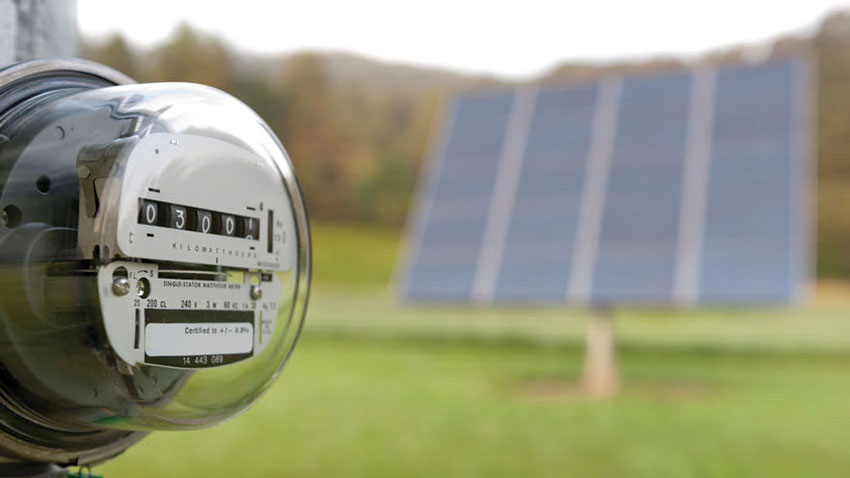
Photo courtesy of PERC
Site-generated renewable energy has the potential to provide as much energy from a carbon-free source as is consumed by a building.
A Hybrid Approach
There is another approach for bridging the gap between current energy production processes and the goal of full net zero emissions that has been implemented in some places around the country. This is a hybrid approach that combines on-site solar or other renewable energy with a low-emission “clean energy” fuel to meet combined heat and power needs. Just as hybrid vehicles have been used over the past 20 years to pave the way for cars and trucks to move to fully electric, such hybrid approaches to building design can help buildings move toward fully emission-free energy in the next 20 years.
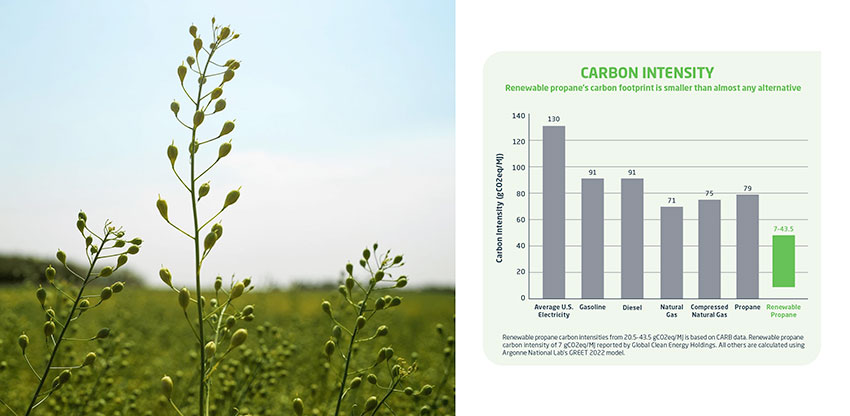
Photo and image courtesy of PERC
Renewable propane made from the camelina plant has a substantially lower carbon intensity compared to the electric grid and other common fuel sources.
Architect Mary Ann Schicketanz, the principal architect at Studio Schicketanz in Carmel, California, is a good example of someone who has incorporated this hybrid approach. She strives to make all the custom homes she designs energy neutral as part of her firm’s focus on sustainability. The large, luxury homes she designs in Big Sur and on the California coast are built to be healthy for the occupant, for the surrounding ecology, and for the climate. But it’s also a necessity since many of the homes she builds in the remote region are off the electric grid, necessitating that energy-neutral approach.
Like most designers and architects, Schicketanz, relies on solar photovoltaic (PV) panels and battery storage as a source of renewable power. But despite the common perception that zero net energy means all-electric, Schicketanz has learned that it isn’t yet practical to rely on electricity alone. Instead, she finds that specifying an alternative fuel for energy-intensive systems such as space heating and water heating yields a particularly effective formula for zero net energy homes. The fuel of choice in this case is propane delivered and stored on site. Such propane-powered systems offer ongoing utility bill savings but also the improved comfort of gas heating and the performance of luxury amenities like gas cooking.
Why propane? It turns out that it is a better choice than almost any other fuel in terms of carbon emissions. The Energy Policy Act of 1992 lists propane as an acceptable “alternative fuel” along with biodiesel and liquified natural gas. Propane, sometimes known as liquefied petroleum gas, or LPG, is a gas normally compressed and stored as a liquid. It is nontoxic, colorless, and virtually odorless, although an identifying odor is normally added, so it can be detected. Propane is commonly used for space and water heating, for cooking, and as fuel for engine applications such as forklifts, farm irrigation engines, fleet vehicles, and buses. It is primarily a byproduct of domestic natural gas processing, though some propane is produced from crude oil refinement. U.S. propane supplies are becoming increasingly abundant due in large part to increased supplies of natural gas. Substituting propane for other fuels such as fuel oil and diesel fuel is an economical and viable step to reduce, albeit not eliminate, the greenhouse gas carbon dioxide and air pollutants like carbon monoxide and nitrogen oxide. The U.S. Energy Information Administration lists propane fuel as one of the lowest sources of carbon dioxide at only 12.68 pounds per gallon of fuel or 138.63 pounds per million Btu. (https://www.eia.gov/environment/emissions/co2_vol_mass.php)
Renewable Propane
After years of research and development, the propane industry now has another option available in the form of renewable propane. Unlike conventional propane, renewable propane can be made from a variety of renewable feedstocks. The most common form of renewable propane is a byproduct of renewable diesel and sustainable aviation fuel made primarily from plant and vegetable oils, animal fats, or used cooking oil. As such, renewable propane’s carbon intensity (i.e., the carbon emitted for every unit of energy it produces) is lower than conventional propane because it’s produced from bio-based or renewable sources.
An increasing amount of renewable propane is being generated from the seed oil of the camelina plant. It is worth noting that renewable propane made from camelina oil has a lower carbon intensity (CI) score than the electric grid in 49 out of 50 states (Measured on a scale of 0-300, only Vermont with a CI score of 2 is lower than renewable propane’s score of 7.). Camelina, also known as camelina sativa or false flax, is a member of the mustard family and a relative of cabbage, kale, and cauliflower, but is not a food crop, nor does it compete with food production. Camelina is grown in cooler regions of the U.S. and will likely expand to the south, as producers are experimenting with varieties that can thrive in warmer climates. Camelina is drought and pest-tolerant and is a pollinator for bees. This cover crop is completely waste-free as the seed produces 40% oil, twice the amount of soybean. The remaining meal is FDA-approved for cow and chicken feed, and the husks are used for mulch. It is beneficial for farmers because it enriches the soil, prevents erosion when fields are fallow, and provides additional income without the need for new equipment.
U.S. fuel processors are making renewable propane today, and the push for cleaner liquid fuels such as sustainable aviation fuel and renewable diesel fuel will lead to a sharp increase in renewable propane production. By 2050, renewable propane could meet half the world’s demand for propane, according to the World LP Gas Association. All of these efforts can help contribute to a more carbon-neutral world.
Bryan Cordill is the Director of Residential Business Development at the Propane Education and Research Council (PERC). He observes that "Propane is clean today, and cleaner tomorrow with the advancement of renewable propane." These latest developments certainly hold promise for hybrid solutions and fully carbon-neutral solutions in the near future.
OPERATIONAL CARBON
With an understanding of the embodied carbon that comes from the production of materials, products, and burning of fuels, we turn our attention to the carbon produced by building operations. Not surprisingly, this topic has received considerable research and attention over the past decade or more as evidenced in the newly released (anticipated October 2023) ANSI/ASHRAE Standard 228-2023 titled “Standard Method of Evaluating Zero Net Energy and Zero Net Carbon Building Performance.” This document is a standard for evaluating whether a building or group of buildings meets the definition of "zero net energy" or "zero net carbon.” The standard includes a calculation for annual averages to determine if the source energy or carbon flows coming to a building are less than or equal to outward flows during operation. The standard covers existing buildings, new buildings, and groups of buildings. Those seeking to achieve net zero buildings would do well to consult this new resource.
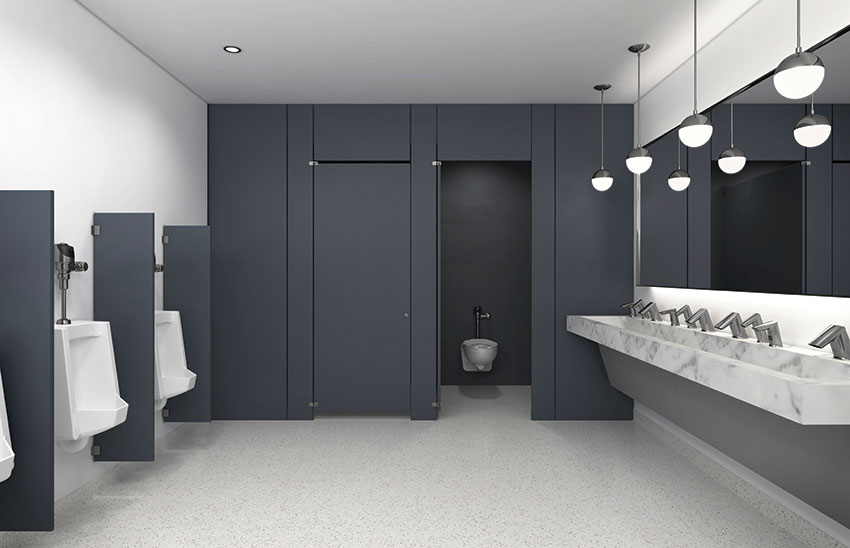
Photo courtesy of Sloan
Specifying sustainable commercial restroom products helps to reduce water usage, which in turn helps to reduce carbon emissions from the energy needed to move and treat water.
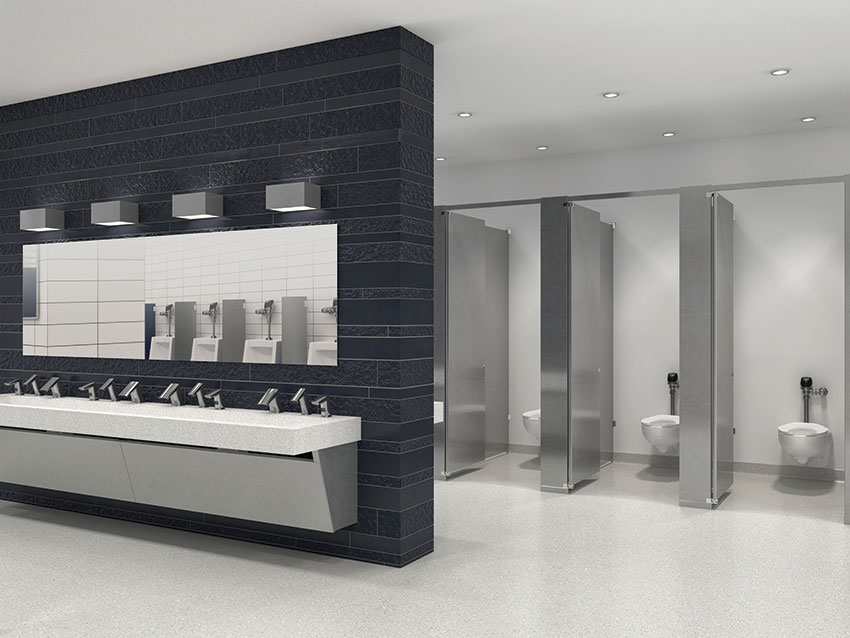
Photo courtesy of Sloan
The ability of restroom fixtures to conserve water being delivered and being sent to wastewater treatment directly impacts the amount of energy and carbon emissions that come about as a result of their use.
WATER USAGE AND CARBON
When looking to address zero net energy or zero net carbon operational solutions, it is common to look at high-intensity energy-consuming equipment in a building and assume they are the only place to focus. While that is an important aspect that should be explored and addressed in building design, there is another area that deserves attention too, namely the amount of potable water usage in a building. As LEED and other green building standards have identified, potable water is a precious resource in and of itself that should be conserved and used properly. But equally significant is the fact that water in buildings requires significant amounts of energy first to extract and treat it for drinking, then for transporting it through a geographic area, and for delivering it to buildings. Equally important, we do well to recognize that a great deal of that water is never consumed for drinking. Rather it is used for washing, flushing, or other reasons and sent down a drain where more significant amounts of energy are then needed to treat the wastewater and its contents. This is particularly true in restroom fixtures in buildings with high usage such as schools, transportation centers, entertainment facilities, restaurants, and hospitality settings, among others. We have noted already that specifying such products that have lower embodied energy and carbon is important, but there are additional considerations as well.
The first characteristic to look for is the ability to reduce water use in restrooms by selecting products that operate well with lower water volume requirements. For toilets and flush valves, that means selecting well-designed products that operate at or below code and industry standards for water conservation. Doing so means less wastewater is produced requiring less energy, and fewer carbon emissions, to treat it.
Handwashing is another area of high energy and water usage in many buildings. The high volume of traffic in commercial restrooms is one factor, but another potential factor is the improper use of the faucets—sometimes a faucet may be turned on and left running, resulting in significant waste. Selecting sensor-operated fixtures that are suited to the particular needs of a building can help in this regard. Working with manufacturers of restroom products dedicated to sustainability will not only help with embodied carbon but also with operational savings through lower water use and the resulting lower carbon emissions.
Paul Sambanis is the Vice President of Sustainability with Sloan. He has heard comments from some design professionals that they think the options are unattractive if the focus is on sustainability or carbon neutrality. He retorts that “While sustainable product offerings may have been limited or budget-restrictive in the past, that is no longer the case. Manufacturers have stepped up and currently offer a much broader and wider range of options that meet water-conserving, energy-conserving, and carbon-neutral goals for all types of building projects.”
The ability to back up the claims of such performance usually comes from third-party verification and demonstrated compliance with relevant standards. In this case, there are a number of such standards that help identify preferred products. The first is the U.S. Environmental Protection Agency (EPA) WaterSense program. This initiative encourages water efficiency by labeling products and services that meet the EPA's criteria for efficiency and performance. WaterSense-labeled products are certified to use at least 20 percent less water, save energy, and perform as well as or better than regular models. The program's goal is to protect the future of the U.S. water supply. WaterSense-labeled products include toilets, flush valves, showerheads, and faucets.
There are also products that meet the requirements of the Living Building Challenge and the WELL Standard. In these cases, they may not only show superior water conservation capabilities, but also contribute to safer, healthier, and cleaner indoor environments.
ENERGY USAGE
A carbon-neutral or zero-carbon building doesn’t mean zero energy─all buildings will continue to need energy to operate. The goal is to provide that energy without producing carbon emissions to begin with or to offset grid emissions by returning an equivalent amount of carbon-free energy. Towards this end, there are two terms that are used to describe relevant design approaches for homes:
- Zero Net Energy (ZNE) homes are defined as those that produce as much energy as they consume over the course of a year. ZNE homes are typically designed to be energy conserving and use renewable energy sources, such as solar panels, to offset their energy consumption. ZNE homes are also known as carbon-free homes when the energy they produce is carbon-free. ZNE homes are commonly designed to be heavily insulated, exceptionally well air sealed, use green construction technology, use sustainable products that reduce CO2 emissions and water use, and incorporate energy-efficient systems and appliances.
-
- Zero Energy Ready (ZER) homes are built to be ready for an onsite energy generation system to be installed, even if it is not installed during construction or renovation of the home. ZER homes are also well designed and built with energy conservation measures so they can offset most or all of their annual energy consumption with an on-site renewable energy system. These homes are airtight, well-insulated, and energy efficient. With the energy-producing system installed, they can then produce as much renewable energy as they consume over the course of a year, leaving the occupants with a net zero energy bill.
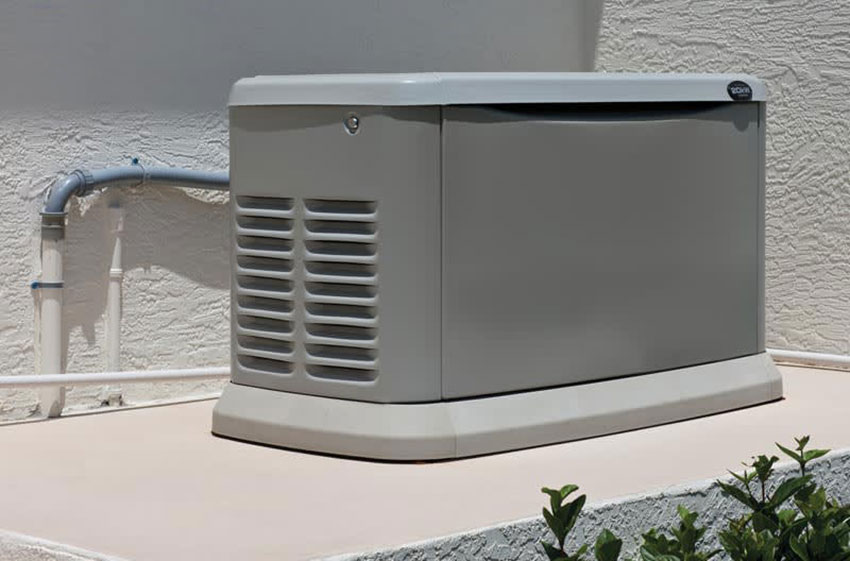
Photo courtesy of PERC
Zero Net Energy (ZNE) and Zero Energy Ready (ZER) homes are designed to use renewable energy or alternative fuels to produce as much carbon free energy as the building uses.
The U.S. Department of Energy (DOE) has a program to recognize energy-efficient and demand-flexible residential buildings. To be certified under the DOE ZER Homes program, a home must meet all requirements based on building type. The builder/developer/plant must be registered as a ZER Home program partner, and the project must be approved by an approved third-party verifier.
The strategies for achieving either ZNE or ZER buildings essentially follow the same process.
First, focus on the building envelope to reduce overall energy loads on the building. Most ZNE homes exceed minimum insulation levels and ensure insulation is installed well. Other priorities include air sealing, using high-quality windows, and maximizing a home’s orientation, which can affect heat gain, passive heating, or solar power availability.
Next, look at the energy-consuming systems in the building and strive for the most efficient options. Different equipment has different capabilities in this regard, so finding ways to reduce their size, their need, or quantity can all help as well.
With the above determined, consider the energy sources – on-site, sourced, or combined. Recognize that mixed-fuel systems may offer lower first costs and reduced ongoing energy costs and emissions and allow for hybrid systems tailored to a project’s unique needs. Hybrid heat pump furnace systems, for example, can be a consideration when it isn’t practical to have all-electric heating as the backup. Combining an air-source heat pump with a high-efficiency propane furnace replaces the inefficient electric resistance backup heat in cold outdoor temperatures, providing improved comfort and the potential for overall energy use reductions.
Finally, although not always in the control of the architect, it is significant to control other energy uses mostly determined by the building users. Energy Star-labeled appliances, such as dishwashers and refrigerators, ensure efficient operation to trim energy use. Energy Star LED lighting offers energy savings and the assurance of additional performance testing such as lumen maintenance over time. And using energy monitoring devices can help encourage energy-saving habits.
A good resource for more information on NZE strategies is TEAM ZERO—a 501(c) 3 non-profit charitable and educational organization, formerly known as the Net Zero Energy Coalition (https://www.teamzero.com/). Their mission is “to unify stakeholders involved in promoting different "paths to zero" with a common agenda and collaborative efforts that accelerate market adoption of zero energy and zero carbon homes, commercial buildings, developments, communities, and retrofits across North America.” They point out that we may be approaching a tipping point in zero net energy home construction and design. They report that more than 22,000 zero net energy projects are in design, in construction, or completed. They also anticipate that as high-performance technologies and solar PV systems continue to be more cost-effective, as energy codes continue to require higher performance, and as awareness increases, ZNE and ZER homes are likely to continue to increase in popularity. TEAM ZERO’s vision is that “the built environment will be a positive asset on the planet’s carbon balance sheet by 2050.” A survey performed by Harris Insights & Analytics found that 83 percent of homebuyers and 89 percent of builders are likely to consider a ZNE home for their next purchase or build. And about the same number–81 percent of homebuyers and 84 percent of builders–are very or somewhat willing to pay more for a ZNE home.
Energy Generation
A common component of ZNE design is the location of the energy source. This is a significant distinction in terms of energy usage, not just one of convenience. Source Energy represents the total amount of raw fuel that is required to operate the building. It incorporates all transmission, delivery, and production losses. As such, it provides a more complete picture of the resource efficiency of a home or building’s energy performance since it includes the raw energy needed to create the electricity (i.e., the burning of fossil fuels to create steam which turns a turbine or generator) and the energy needed to deliver that electricity. Each step in the process involves some overall energy loss due to inherent efficiency levels in each step. Looking at source energy from a power plant, it is common to find that for every 1.0 unit of electrical energy that passes through an electrical meter at a building, over 3.03 units of source energy was consumed to generate and deliver that electricity. This is due to losses from extracting and processing the fuel, the conversion losses of burning the fuel to generate some electricity, and transmission losses as the electricity is distributed over the grid. Essentially this means that for every kW hour of electricity consumed, three times as much energy was required to produce and deliver it. Once inside the building, further losses occur based on the efficiency of the equipment and fixtures that the electricity is powering. Site Energy refers to energy (including electricity) that is generated at the building site. Site energy may be delivered to a building in one of two forms: primary or secondary energy. Primary energy is the raw fuel that is burned to create heat and electricity, such as natural gas or fuel oil used in onsite generation. Secondary energy is the energy product (heat or electricity) created from a raw fuel, such as electricity purchased from the grid or heat received from a district steam system. A unit of primary and a unit of secondary energy consumed at the site are not directly comparable because one represents a raw fuel while the other represents a converted fuel. If the energy is used as it is being produced, then there are no transmission losses which makes it inherently more efficient. The overall efficiency of the energy generation on-site will vary depending on the equipment and the type of system being used, but generally speaking, fewer units of energy are needed for each unit consumed with on-site energy generation than with source energy solutions. On-site energy sources like PV and Propane will score better on source energy utilization than conventionally delivered energy sources. Both site and source energy need to be dealt with in order to achieve carbon-neutral design.
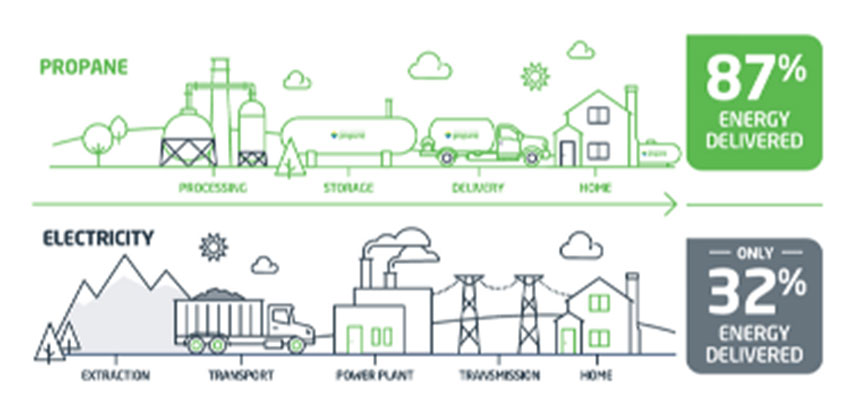
Image courtesy of PERC
Site energy is inherently more efficient than remotely generated energy due to the multiple steps and conversions needed from extraction to electric consumption.
In between these two options, the use of “microgrids” has started to appear. These are much smaller scaled versions of the larger multi-state electrical grid but offer an opportunity for some carbon reductions. The concept is to create a small power plant that is dedicated to serving a particular group of buildings either as part of a general community or a specific functional entity, such as a business operation. They may serve as a supplement to the larger grid and may be powered by renewable energy (wind, solar, etc.), conventional energy (diesel, propane, etc.), or a hybrid approach.
In situations where microgrids are desired or in use, they are another opportunity to reduce the carbon emissions they may create. Ideally, an all-renewable energy solution that emits zero carbon emissions should be considered first such as PV with battery backup. If that isn’t possible or practical, then hybrid solutions are the next best thing. However, the fuel source for such a hybrid solution should be assessed. It is common for power companies, businesses, and others to default to diesel generators for electrical generation with natural gas coming in as an option where it is available. As noted already, they both have higher carbon intensity ratings than propane, and especially renewable propane. Further, propane has the advantage of being able to be delivered to remote locations that may not be served by natural gas. By locating the power generation close to the users through a microgrid approach, the overall efficiency of the entire process increases notably. Instead of requiring over three units of energy to produce one unit of electricity, propane has been shown to require only 1.15 units of energy at the source, accounting for losses from extracting, processing, and distribution.
An example of this process is found in the use of solar PV with battery backup and propane generator solutions for remote wildfire-prone locations in California. Instead of ruggedizing the transmission and distribution (T&D) lines which could cost more than a million dollars per mile in remote locations, electric utilities are de-energizing the T&D lines and installing microgrid solutions to avert forest fires. In particular, Pacific Gas & Electric (PG&E) has issued a 2021 wildfire mitigation plan and reports that a technology combination of solar PV and battery energy storage with supplemental propane generators is not only the most cost-effective and reliable but also the cleanest solution for initial remote grid sites. In most locations, the supplemental propane generators are used to charge the batteries when the batteries reach a lower state of charge. In other instances, the propane generator is also used for providing supplemental electricity due to higher electricity demand prices charged by the electric utility. Since remote microgrids often depend on diesel for fuel supply, it is easy to see why propane is receiving significant traction due to its ability to reduce emissions and improve local air quality, particularly if renewable propane is used.
Combined Heat and Power
Other means to consider in the quest for carbon neutrality are the efficiencies found in systems that generate both heat and power for a building complex, a campus, or other identifiable group. This has been a common approach for some time using conventional fuels. However, propane, including renewable propane, is being used for combined heat and power (CHP) solutions in the 1 kilowatt-1 Megawatt range (residential, commercial, and industrial). Typically, the engines employed for CHP have higher thermal efficiency (>30% fuel to electrical conversion efficiency), higher durability (40,000-60,000 hours), and low emissions. The biggest challenge in using these solutions in the backup generator market is their high capital cost since the attributes and expectations of the CHP products are different from the low-cost and low-durability backup generator products. Depending on the size of the unit, a 16-43 percent reduction in CO2 emissions can be realized when propane is used in these systems instead of diesel.
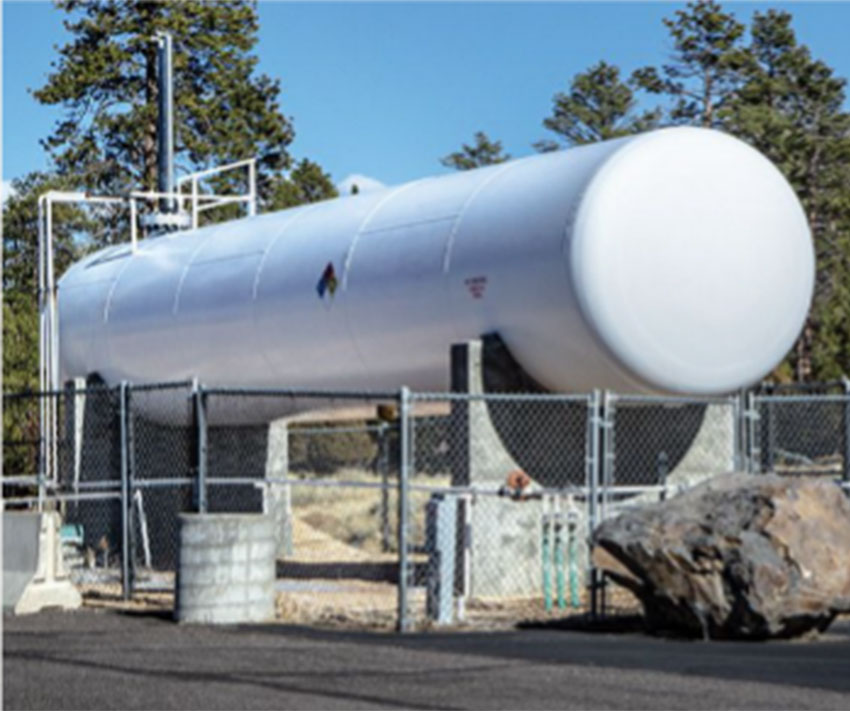
Photo courtesy of PERC
The hybrid use of propane and other sustainable energy sources can help reduce overall emissions.
Propane also opens the door for fuel cells, a high-efficiency and low emissions technology that is seldom used with diesel. In addition, some fuel cells produce very low Nitrogen Oxide (NOx) (0.03 g/kWh) and Carbon Monoxide (CO) (0.045 g/kWh) emissions. For added resiliency, CHP solutions work well for residential, commercial, and industrial applications, providing not only the needed electricity but also heat and/or hot water (and/or cooling) during power outage situations. When used in CHP mode, these solutions can have more than 80% fuel conversion efficiency to electricity and useful heat.
CONCLUSION
There is no longer any reason for architects and designers to think that carbon-neutral design is for the future – it is critically important that every current project pursues that goal now. This is abundantly true for the embodied carbon found in the materials and products that we specify and incorporate into our designs. It is also true for the operational carbon generated to provide heating, water, and electricity to the building over its full-service life. There are options and opportunities now to create fully carbon-neutral buildings as well as hybrid solutions that leverage a variety of renewable energy sources with some more conventional, but lower carbon, choices. Design professionals have an abundant choice of tools, standards, and information sources to achieve better results now. Those who take advantage of it will achieve more sustainable buildings that meet all other project requirements while providing energy needs with drastically reduced or even zero carbon emissions.
Altogether, these and other design strategies are helping architects to meet the challenges of a post-pandemic world.
Peter J. Arsenault, FAIA, NCARB, LEED AP, is a nationally known architect and a prolific author advancing carbon neutrality by design. www.pjaarch.com, www.linkedin.com/in/pjaarch

